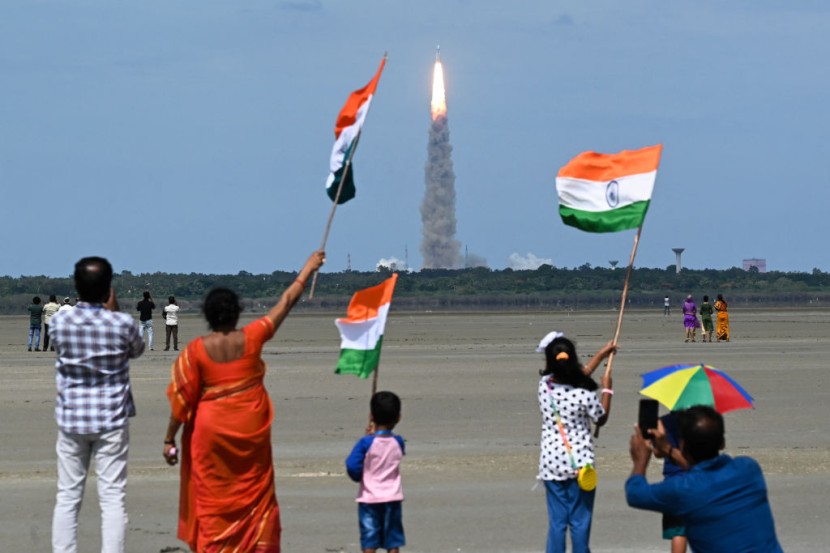
The Indian Space Research Organization (ISRO) announced over the weekend its Chandrayaan-3 spacecraft has successfully entered Moon orbit.
The spacecraft is India's second attempt to orbit and land a spacecraft in lunar orbit after their failed attempt to do so back in 2019 with Chandrayaan-2. It launched aboard the Launch Vehicle Mk 3 (LVM3) rocket on July 14.
After six Earth elliptical orbits, each time raising it to reach the Moon, the spacecraft achieved a slingshot maneuver that allowed the probe to be attracted to the Moon's gravitational pull.
ISRO released a video on X, formerly Twitter, which featured a close-up look at the Moon from various angles.
Read Also: Russia to Launch First Lunar Lander in 50 Years, Evacuates Village in Preparation of Booster Crashes
ISRO Hopes to Stick the Landing
Following lunar insertion, ISRO's ultimate goal was to place a lander and rover on the surface of the Moon's south pole after the failure of Chandrayaan-2. The attempt is scheduled no earlier than August 23, as per Interesting Engineering. The spacecraft would decrease its speed in the next few weeks to prepare for landing.
"As the mission progresses, a series of maneuvers have been planned to gradually reduce Chandrayaan-3's orbit and position it over the lunar poles," ISRO said in a statement.
The first of multiple orbit-lowering maneuvers was performed on August 6, with the next one scheduled for August 9.
Once the spacecraft reached optimal landing altitude, the lander and rover would separate with the propulsion module to finish the landing process on its own. Upon successful landing and deployment of the small rover inside the lander, the Chandrayaan-3 mission would have roughly one lunar day, equivalent to 14 Earth days, to study their surroundings and collect vital lunar data.
A successful touchdown will make India the first country to land on Moon's south pole. It will also join a small group of nations that have made a soft landing on the Moon, after the United States, the Soviet Union, and China.
Both the US and Russia, the Soviet Union's successor state, are also preparing to send their respective space missions to the Moon. NASA is scheduled to launch the manned Artemis 2 mission in November 2024, while Roscosmos is attempting to launch the Luna-25 lander on Friday (August 11) as its first lunar mission since 1976.
Related Article: India Launches Chandrayaan-3 Moon Mission
© 2025 HNGN, All rights reserved. Do not reproduce without permission.








